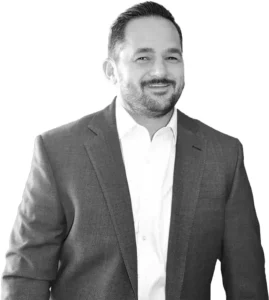Continuing with the theme of last week, we’ve invited in another guest author here on Thoughts On Money, Ishan Chhabra.
Ishan works in our investment solutions department here at The Bahnsen Group. As an analyst, Ishan provides research and support to our investment committee. Ishan is wise beyond his years, and I am confident that you will enjoy his perspective on risk and how the finance industry perhaps missed the mark on how to best measure risk for investors.
Without further ado, these are Ishan’s Thoughts On Money.
***
What if volatility, the thing we fear most about investing, isn’t really that bad?
Conventional finance has reduced the complex reality of investment danger to tidy statistical measures for decades by treating risk and volatility as interchangeable terms. However, this equation is not complete. Risk is not only statistical; it is also contextual, individual, and frequently psychological.
The Conventional View: Volatility as Risk
We have learned to think of risk in a mathematical manner thanks to modern portfolio theory: Standard deviation quantifies the degree to which returns deviate from their mean. The amount that an asset moves in relation to the market is indicated by its beta. Value-at-Risk models appear to be very accurate at predicting possible losses. These metrics offer standardized benchmarks for comparison and allocation for institutional investors who oversee billions of dollars across diverse portfolios.
From the perspective of portfolio mathematics, this framework makes sense. Uncertainty is produced by volatility, and uncertainty makes it more difficult to forecast results. Unpredictability is synonymous with risk in financial modeling. The computations are accurate, the models are elegant, and the reasoning is clear.
But real-world experience complicates this story. Long-term government bonds, which were deemed “safe” by conventional volatility measures, suffered catastrophic real losses in the 1970s as inflation skyrocketed. In the meantime, purchasing power was better protected by volatile stocks. Although bonds appeared safer on paper, they turned out to be more hazardous in practice.
These illustrations highlight a serious problem: The models make the assumption that investors are long-term, logical thinkers, but, in practice, people are wired for instantaneous emotional responses. While volatility can indicate uncertainty, it is not always a sign of danger.
The Disconnect: Why Humans Experience Risk Differently
Risk is not experienced by humans in the same way spreadsheets calculate it. The psychological effects of volatility are far more complicated than its statistical footprint because behavioral finance has exposed systematic biases that skew our perception of danger.
As a nod to the concept of loss aversion, losing $1,000 hurts about twice as much as gaining $1,000. This effect is exacerbated by myopic loss aversion, which states that the more often we check our portfolios, the more likely we are to experience short-term losses and the more psychological harm we take in from the same underlying volatility.
Consider this scenario: The same mathematical volatility is experienced by an investor who checks their portfolio every day during a 15% market correction as by one who checks it monthly, but the daily checker takes a constant barrage of emotional blows. Only the rebound may be seen by the monthly checker. Same volatility, different danger.
Another layer of distortion is introduced by time horizon mismatch. A 30% drawdown that represents normal market behavior over a 20-year horizon feels like an existential threat when you’re living it day by day. Your rational brain knows it’s temporary noise. Your emotional brain screams danger.
Beyond cognitive biases lie qualitative risks that no volatility measure captures:
- Liquidity risk: having to liquidate assets during a downturn
- Career risk: losing a job when portfolios fall
- Reputation risk: appearing foolish for rash decisions
These have a significant impact but cannot be measured. Additionally, they frequently influence behavior more strongly than any statistical measure.
These effects are amplified by life stage. The impact of a 30% portfolio decline on a 65-year-old retiree differs significantly from that on a 30-year-old professional. While the latter has decades for compound growth to work in their favor, the former faces sequence-of-returns risk and a short recovery period. Similar volatility. Radically different consequences.
Reframing Risk: A More Holistic View
A more complete definition might be:
Risk = probability of permanent capital impairment + probability of emotional dislocation leading to poor decisions.
This framework acknowledges that investments can hurt you in two distinct ways:
- By actually losing money permanently
- By making you feel so uncomfortable that you act against your own interests
This reframing shifts the goal from maximizing theoretical return to building portfolios you can actually live with — through panic cycles, news headlines, and internal doubts. It prioritizes resilience over optimization.
You start to view risk tolerance as a moving target that is influenced by life stage, lived experience, and recent market behavior rather than as a static response to a questionnaire. That is a more accurate representation of our decision-making process.
This perspective on risk helps you refocus your attention, making it more about building a durable portfolio than the “optimal” one. Not the highest Sharpe ratio, but the one you’ll actually stick with when things get uncomfortable.
This touches on the notion of antifragility, a profound philosophical concept. Nassim Nicholas Taleb popularized the idea that antifragile systems not only endure disorder, but thrive on it. Portfolios built with emotional and structural flexibility may not minimize volatility, but they can be more robust — or even strengthened — by the unpredictable.
Implications for the Thoughtful Investor
Reframing risk has implications for how thoughtful investors approach both portfolio construction and decision-making. It pushes us to:
- Design for behavior, not theory
- Accept lower expected returns in exchange for higher adherence
- Prioritize liquidity buffers and emotional margin of safety
The thoughtful investor no longer asks: What’s the highest risk-adjusted return I can achieve?
Instead, they ask:
- What strategy can I follow through a full market cycle?
- What level of daily noise can I mentally ignore?
- What drawdown would genuinely keep me awake at night?
These are not mathematical questions; they are psychological ones. Additionally, they are necessary to succeed in the real world.
It is important to note that institutional investors still use volatility-based metrics because they are standardized, justified, and mandated, not because they are comprehensive. Risk is encouraged to stay “measurable” even when it is only partially understood by internal compliance, regulatory scrutiny, and reporting requirements. One of the most understudied issues in contemporary finance may be the discrepancy between how institutions define risk and how people actually perceive it.
Closing Thoughts
Risk isn’t volatility — it’s what volatility does to you.
The riskiest investments aren’t always the most volatile; rather, they’re the ones that lead you to make rash, emotionally motivated decisions at the wrong moment. And the safest portfolio isn’t the one with the lowest standard deviation; it’s the one you can hold through uncertainty without panic.
So, ask yourself:
- What does danger feel like to me?
- Is it watching my account balance fluctuate — or the creeping worry that I’m not growing fast enough?
- Is it short-term loss, or long-term stagnation?
What risk are you truly managing — statistical or psychological?
Understanding your own emotional-financial interface may be more important than any formula. Because in the end, the risk that matters most isn’t the one in the textbook. It’s the one that keeps you from reaching your goals.







